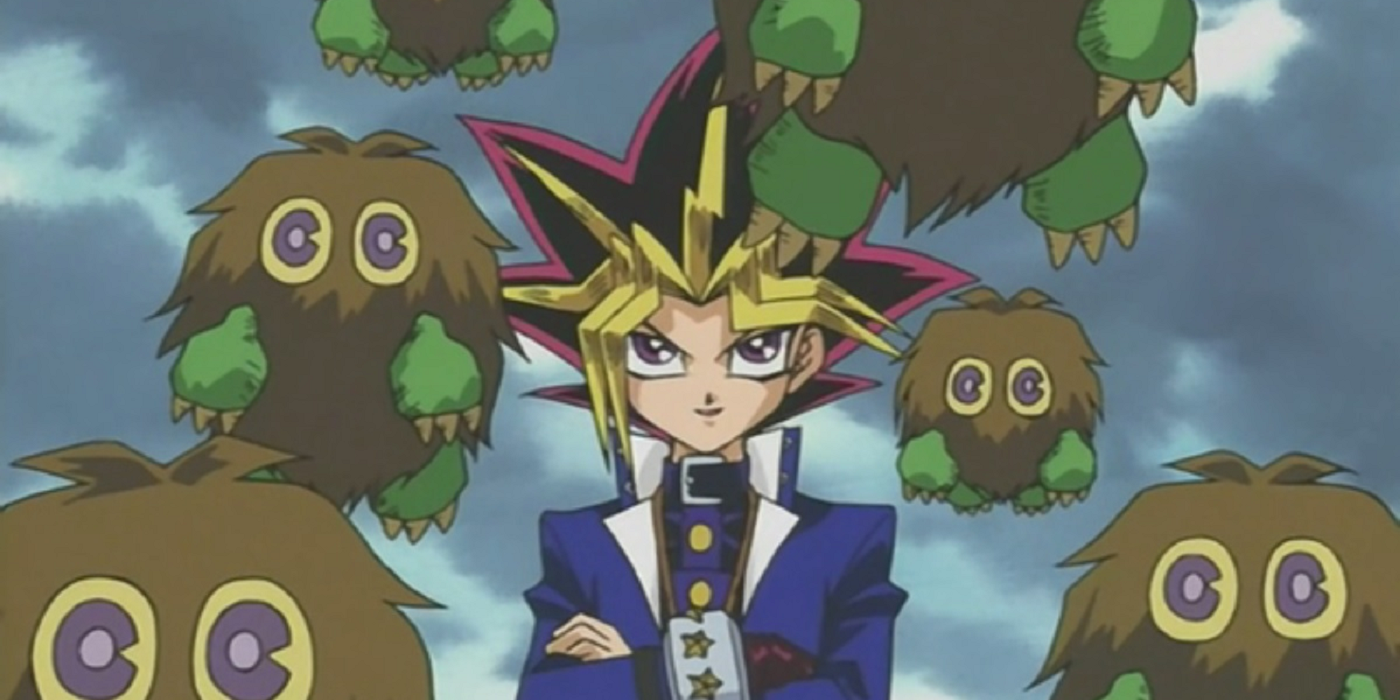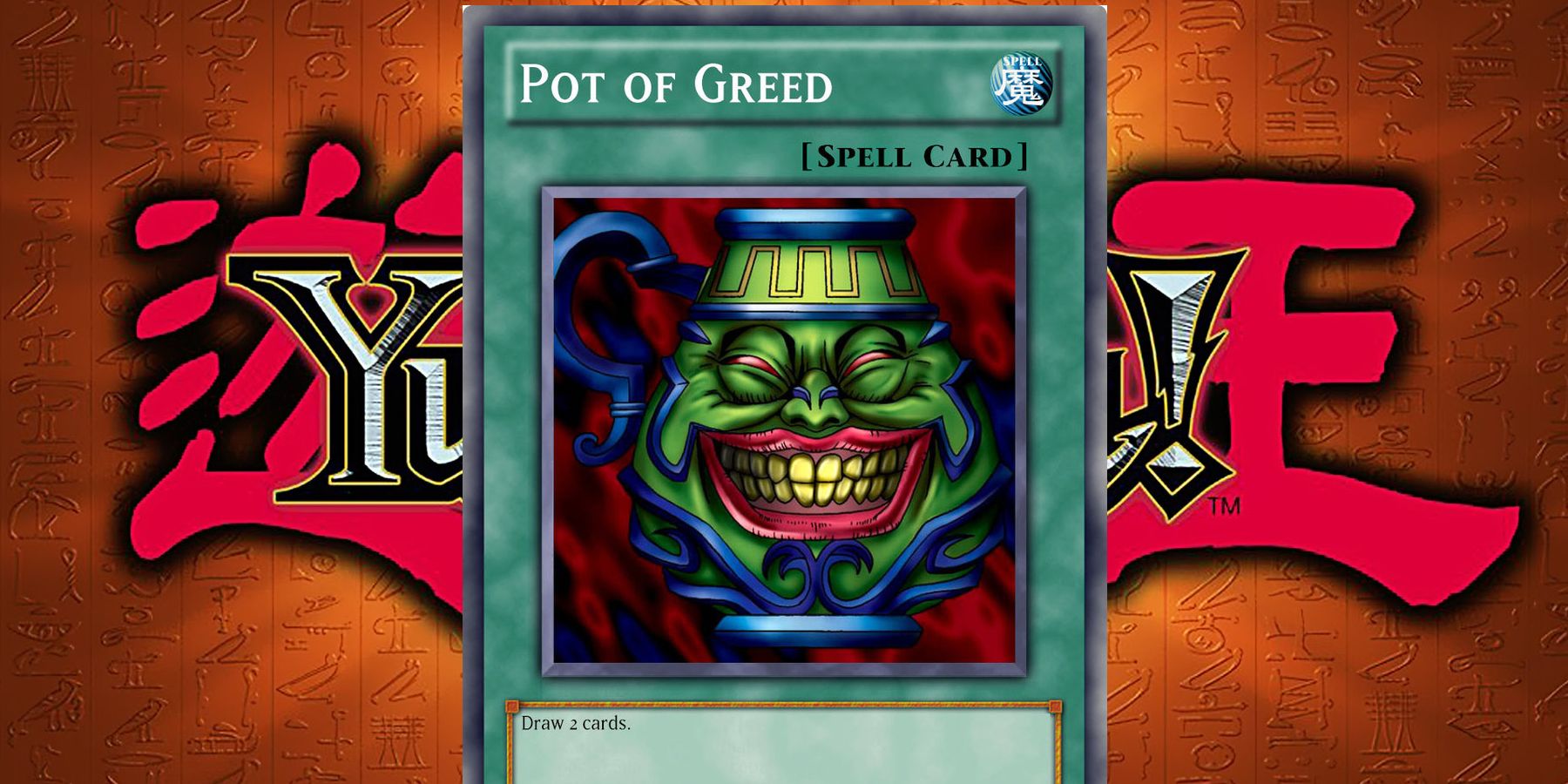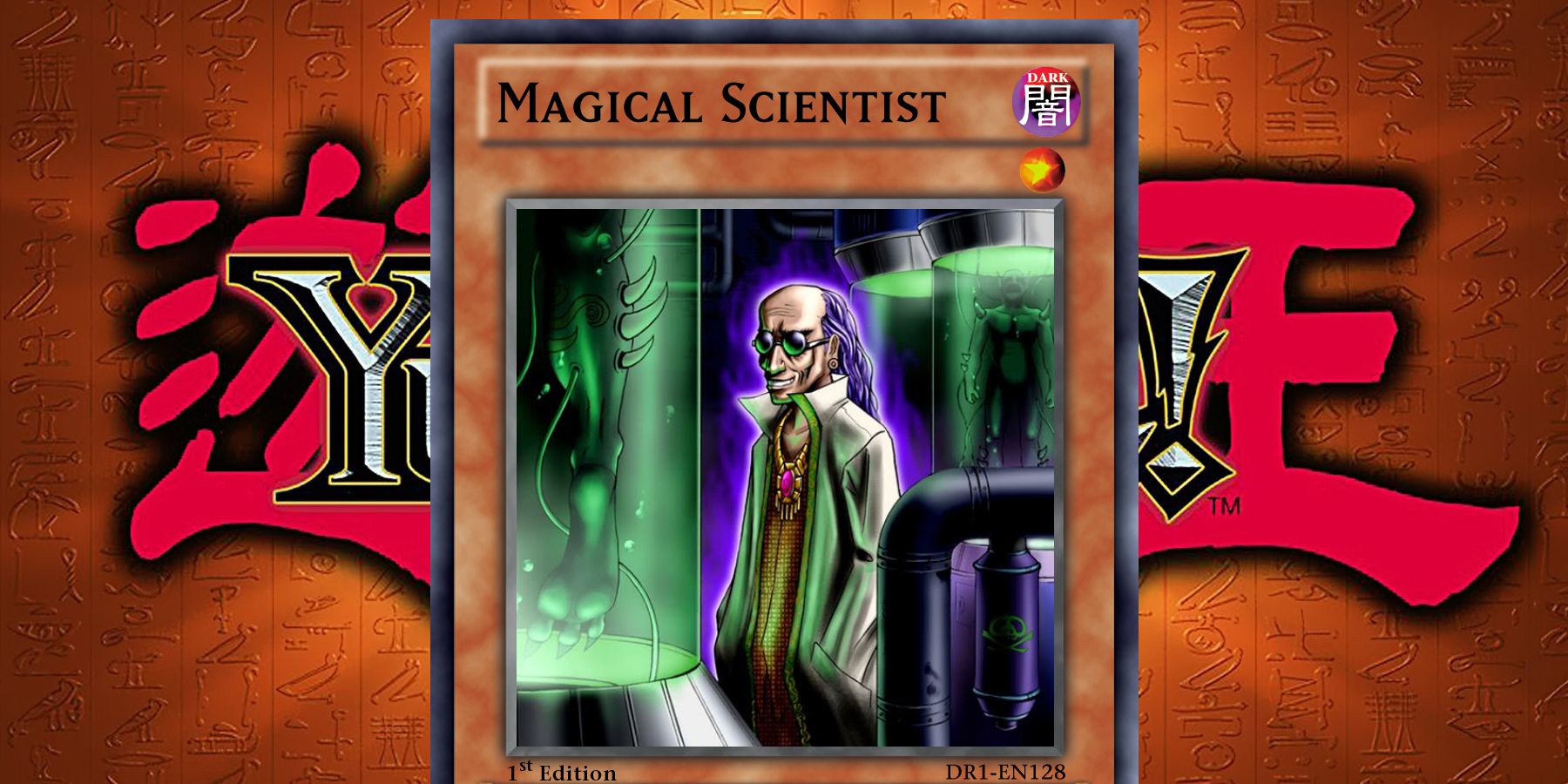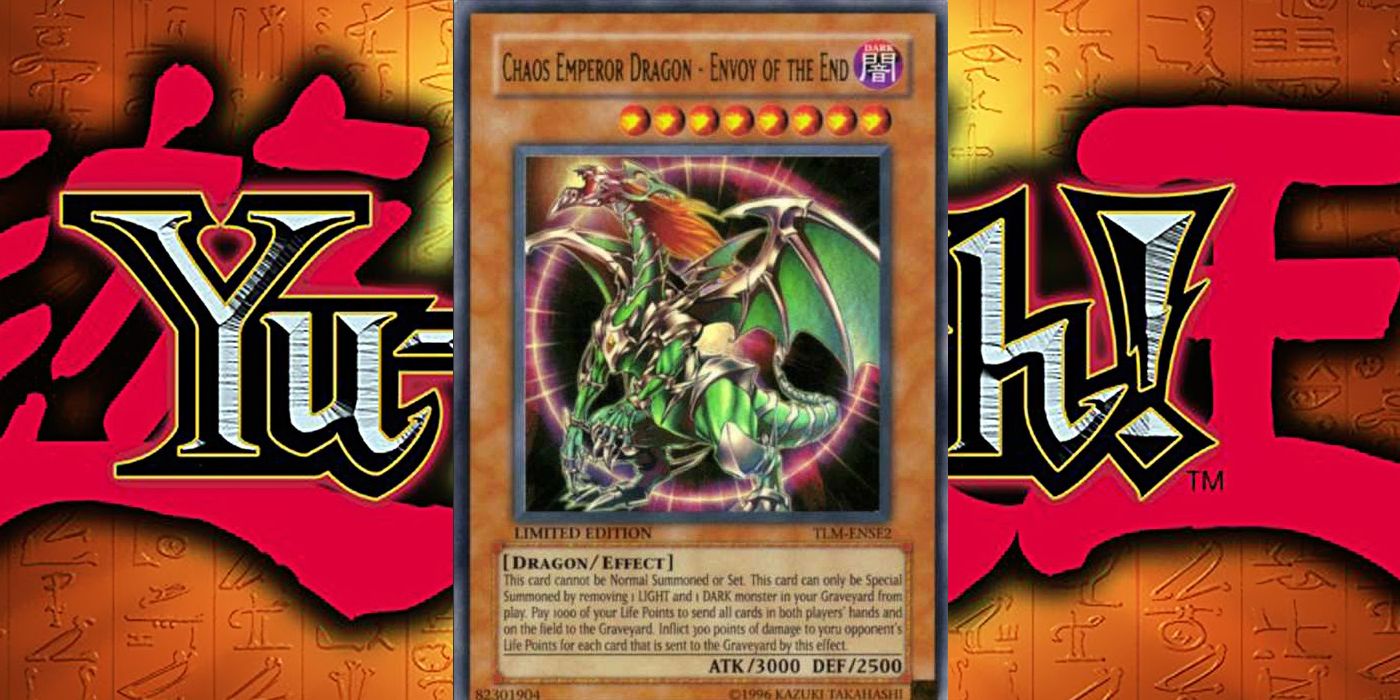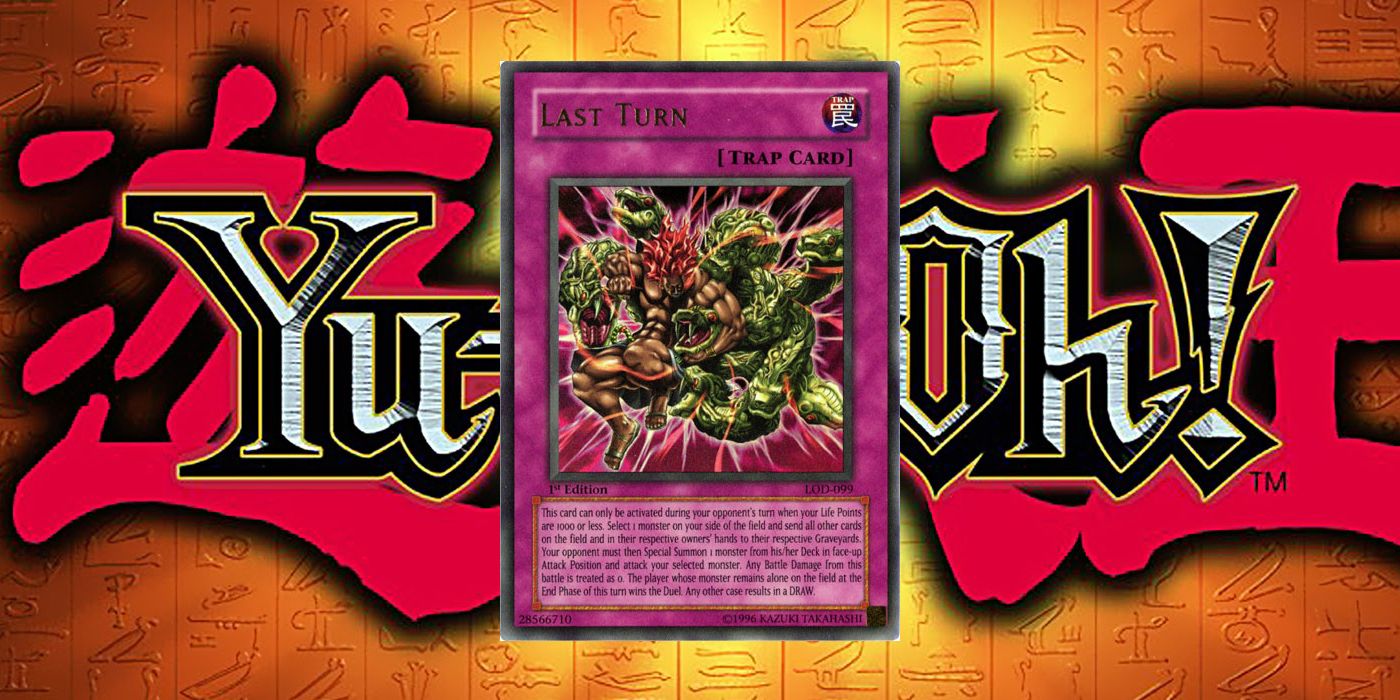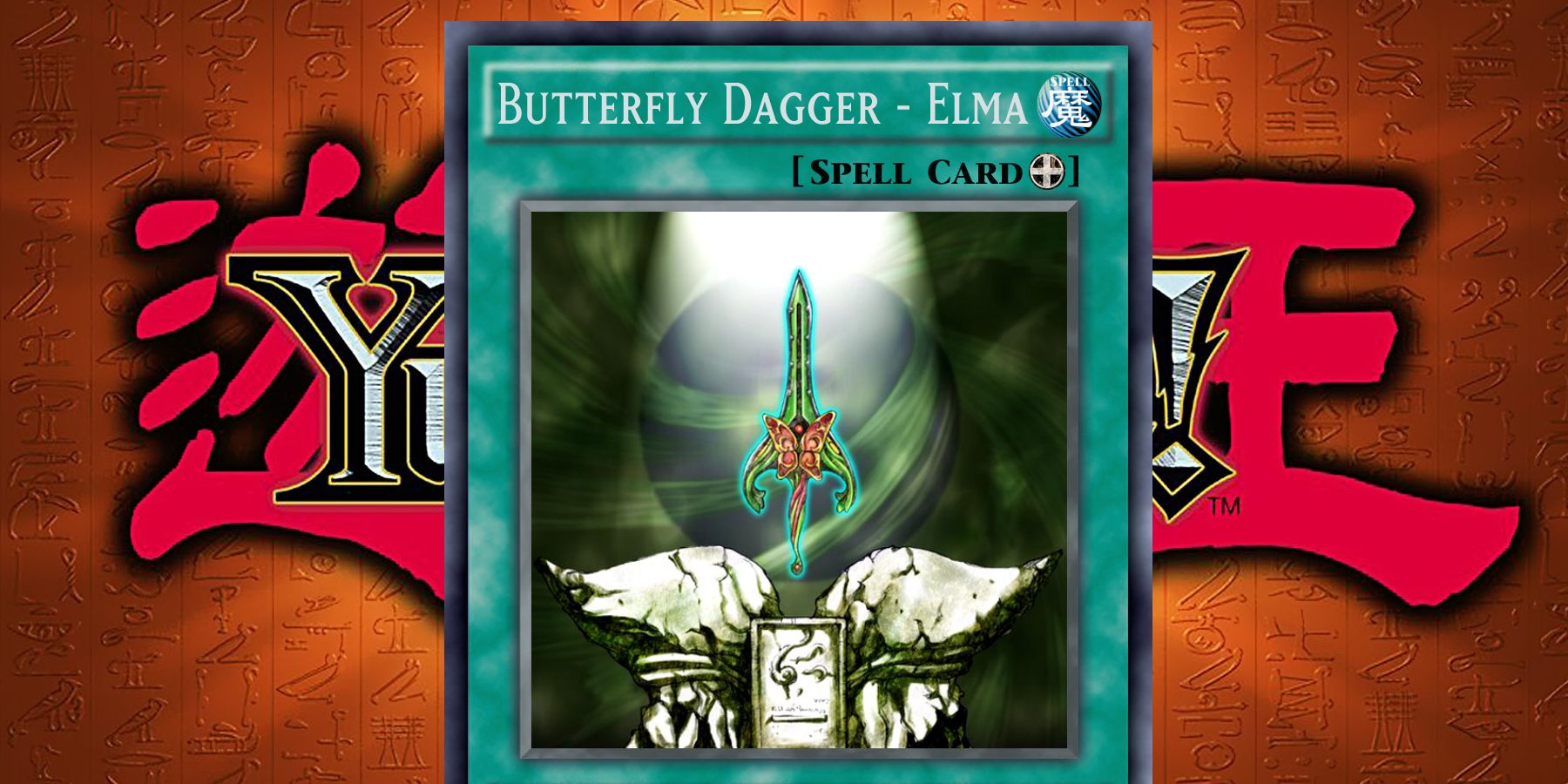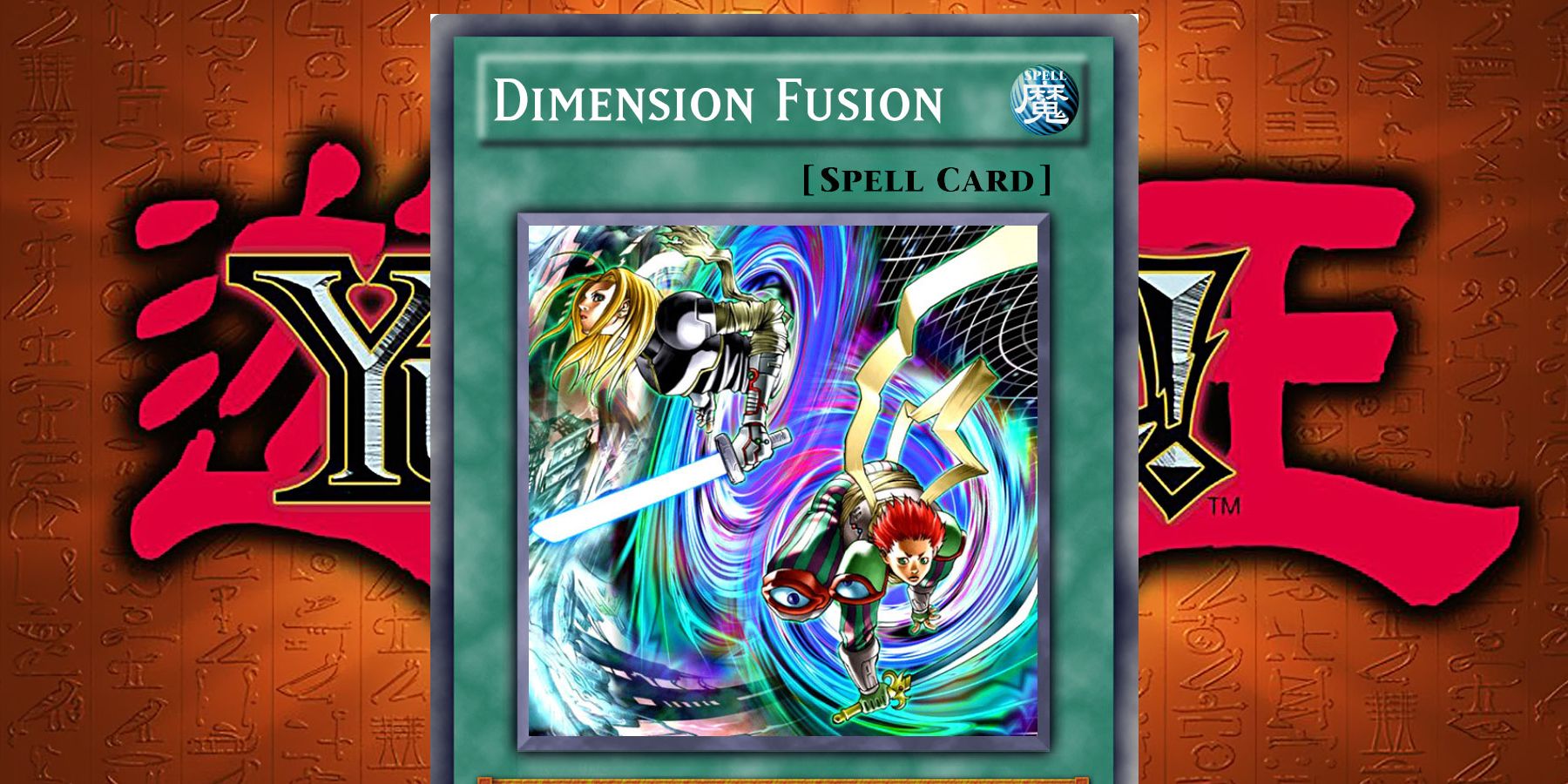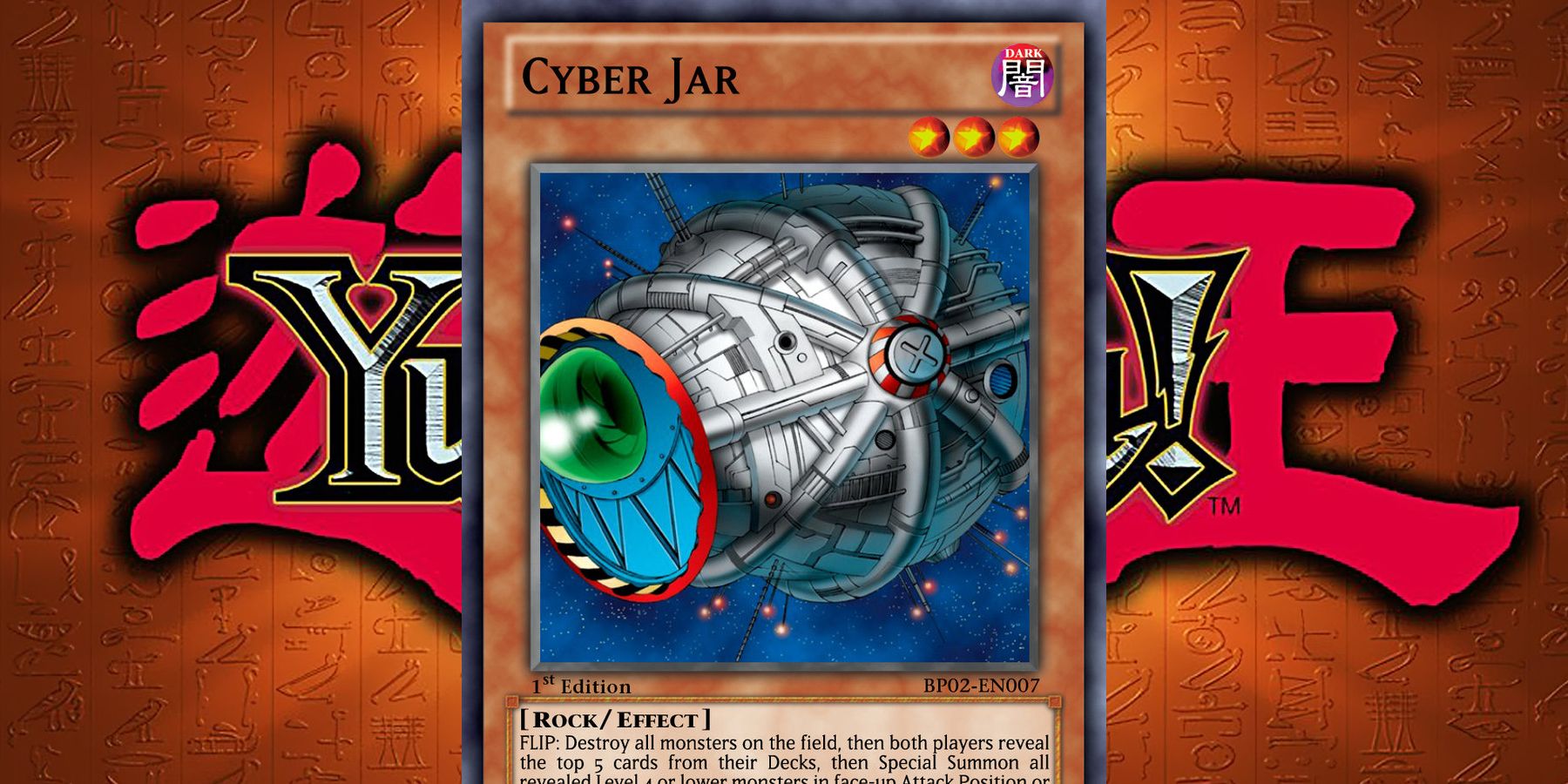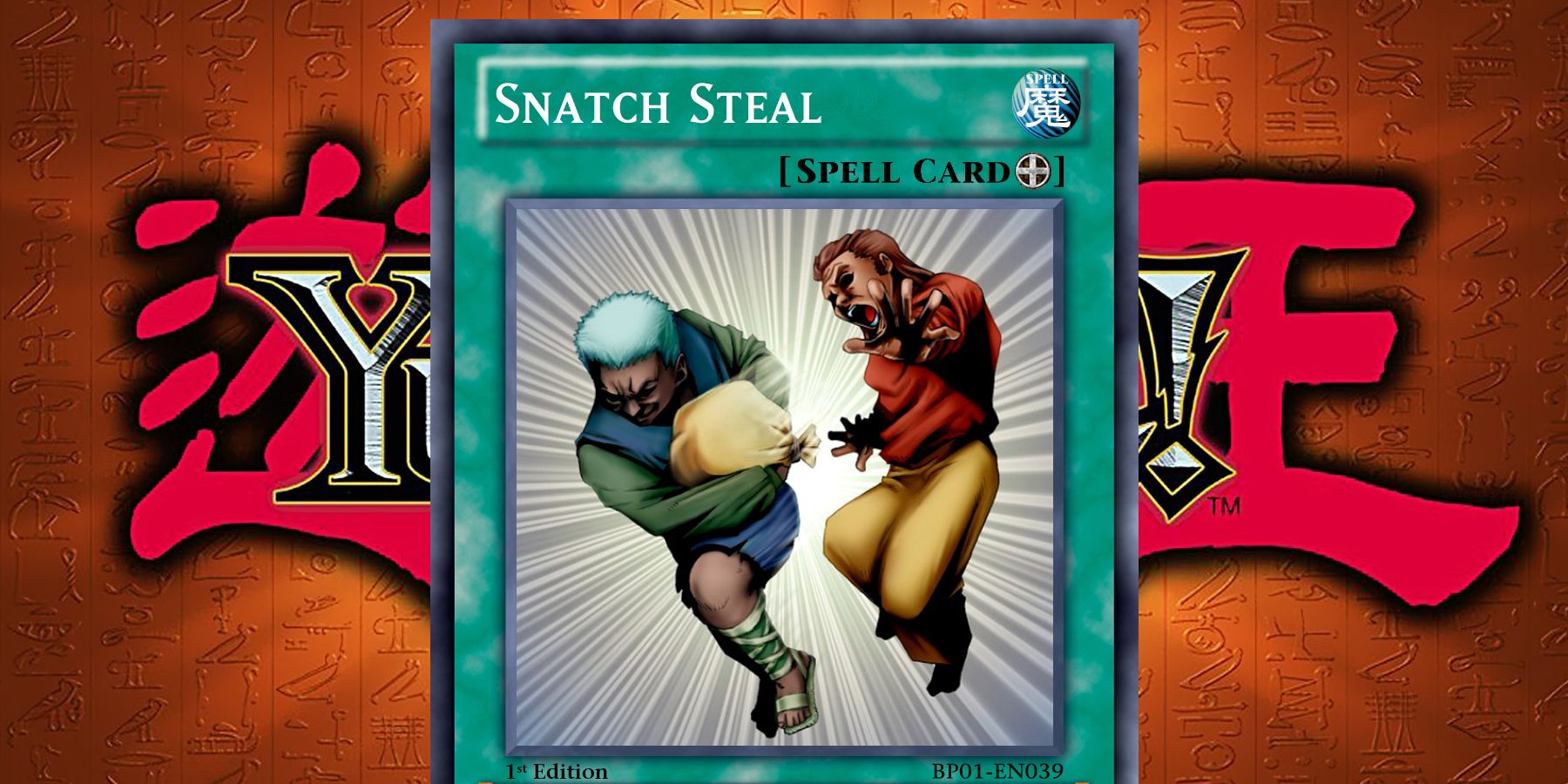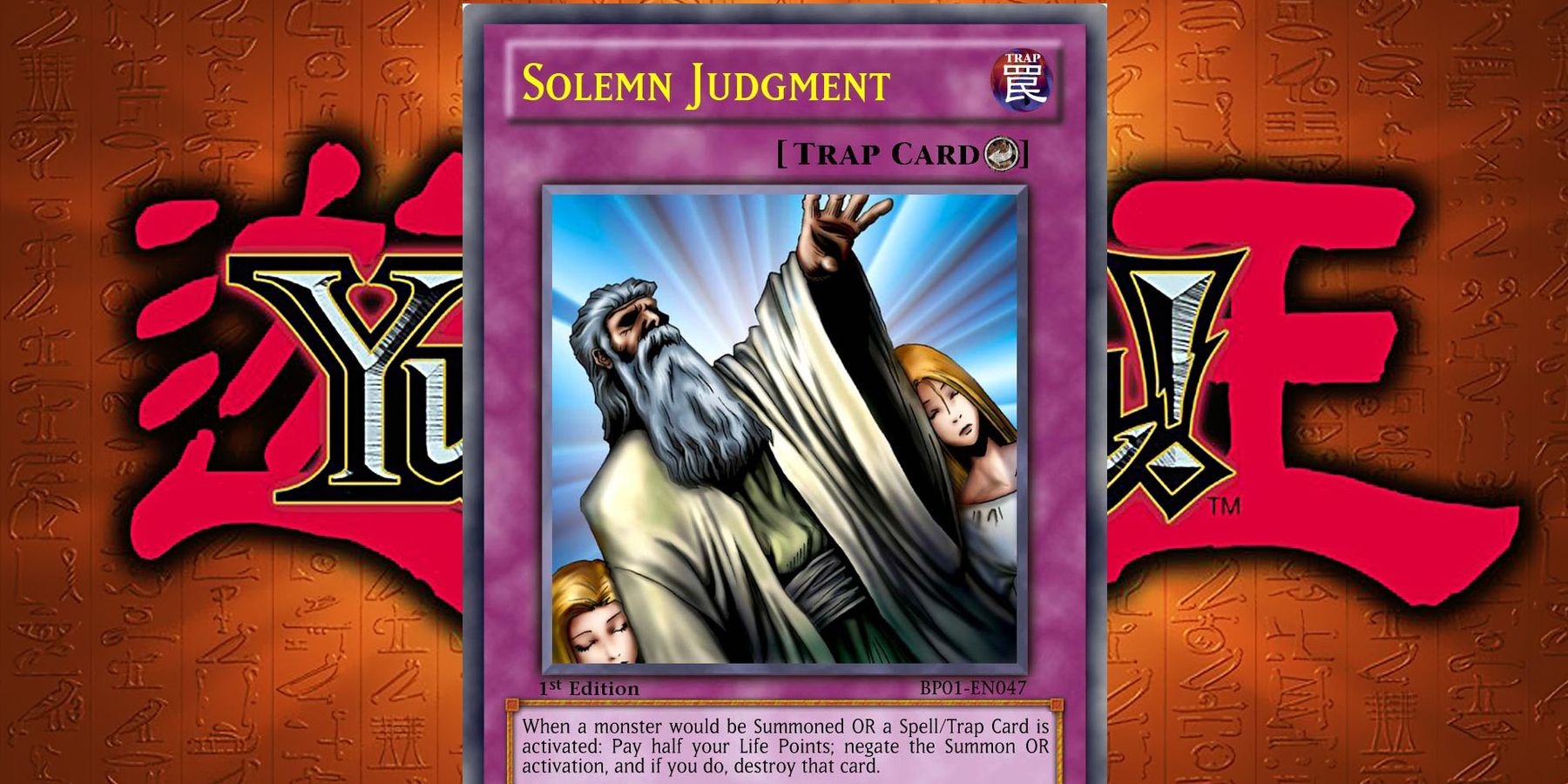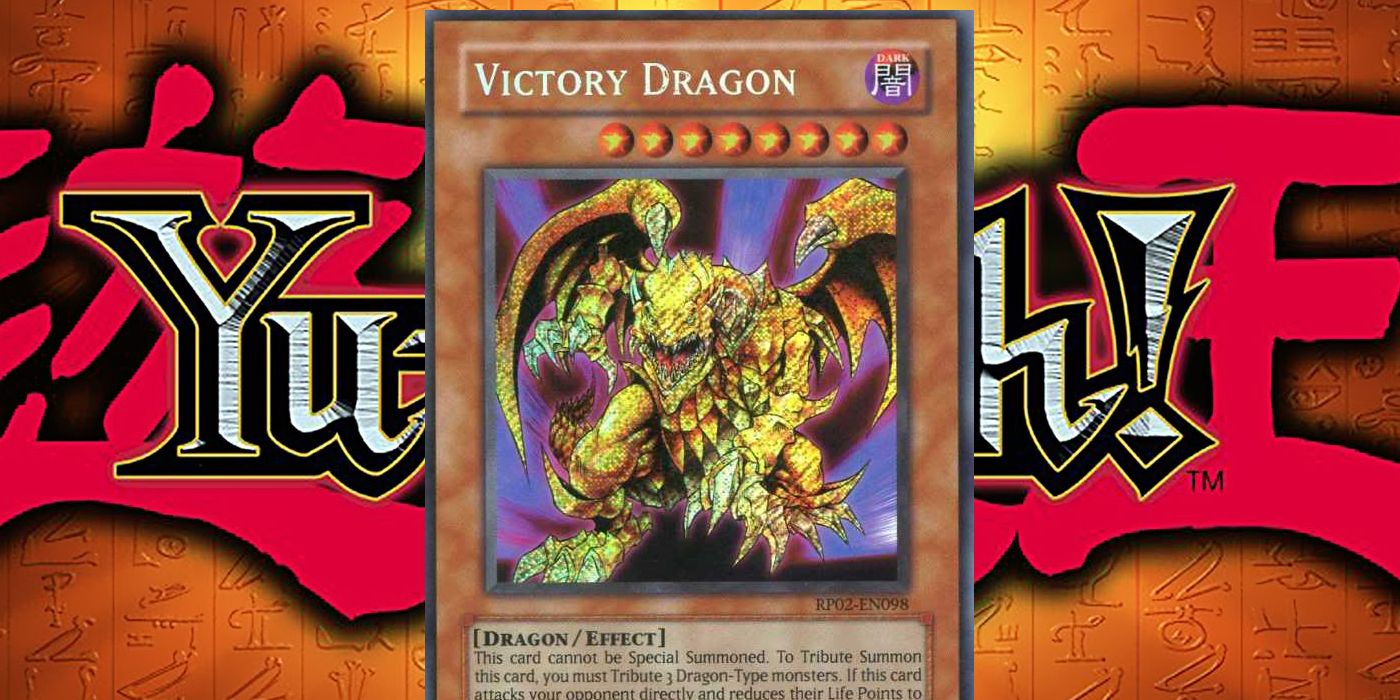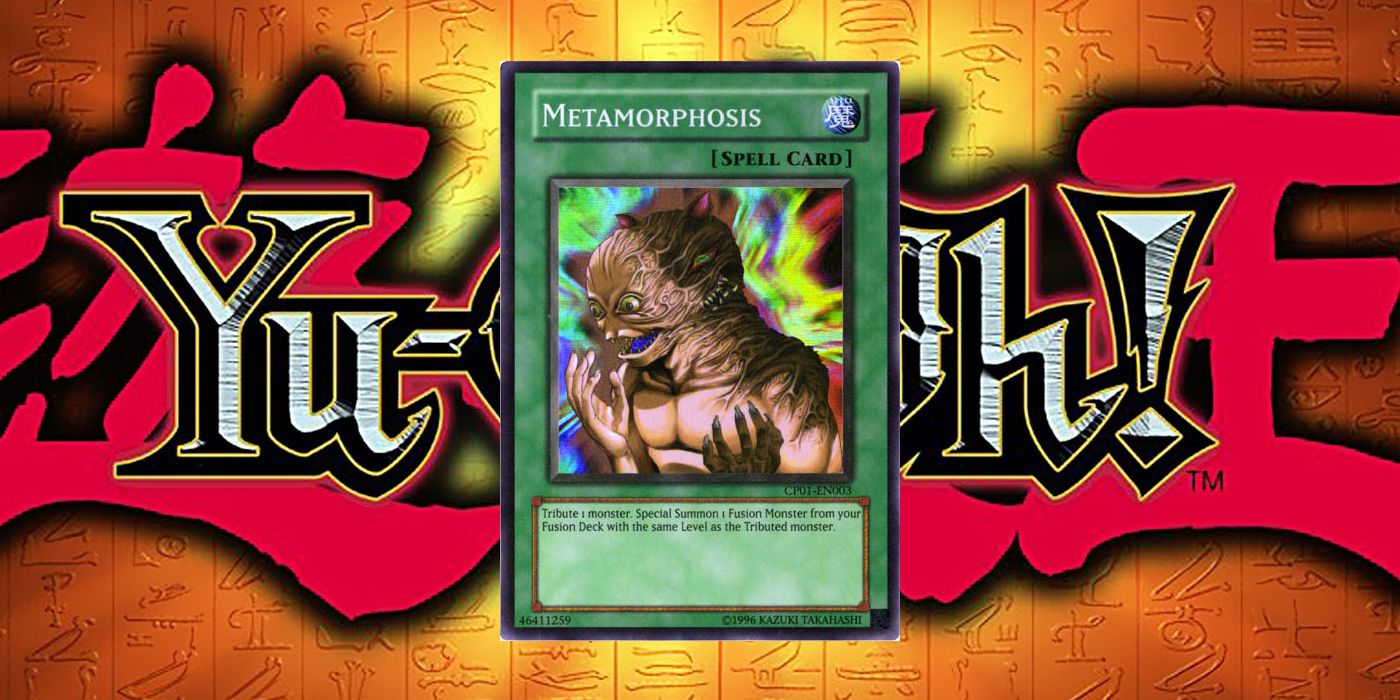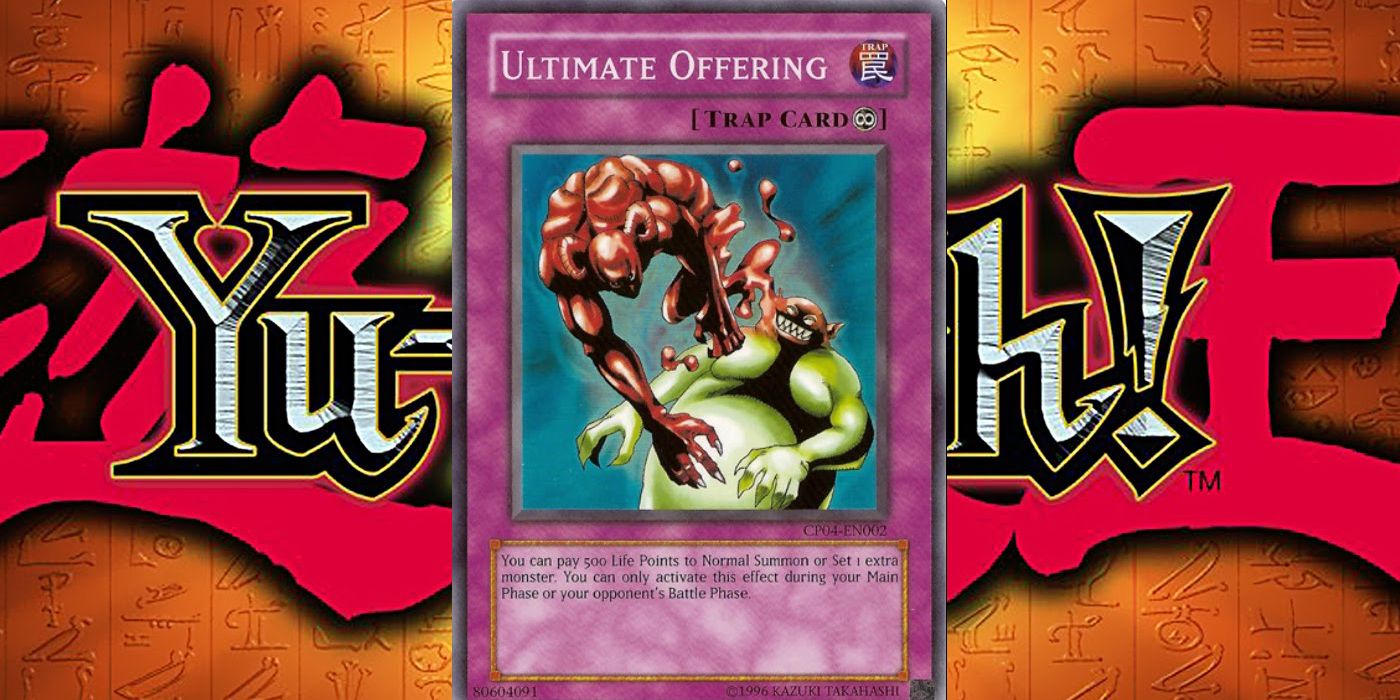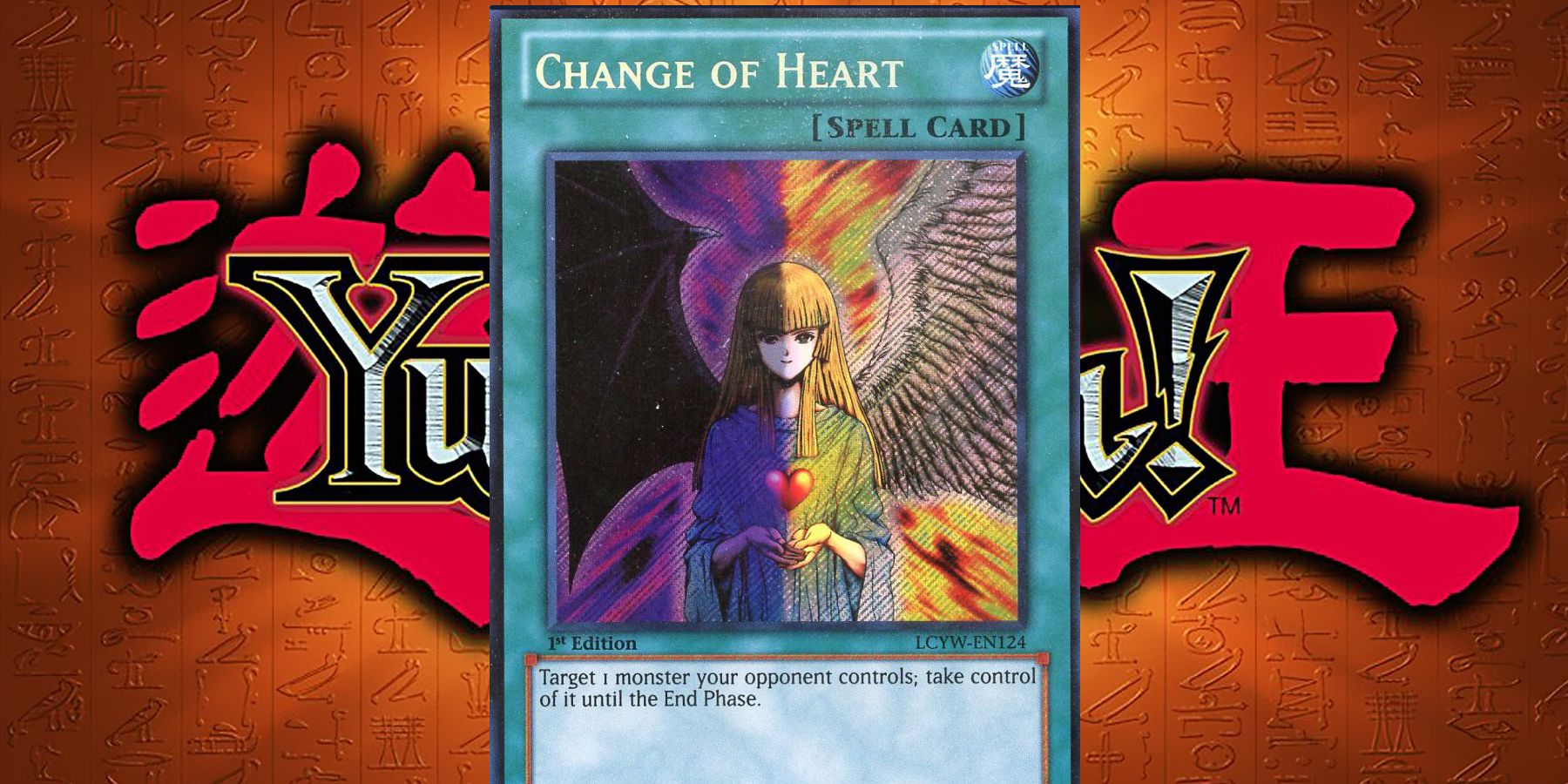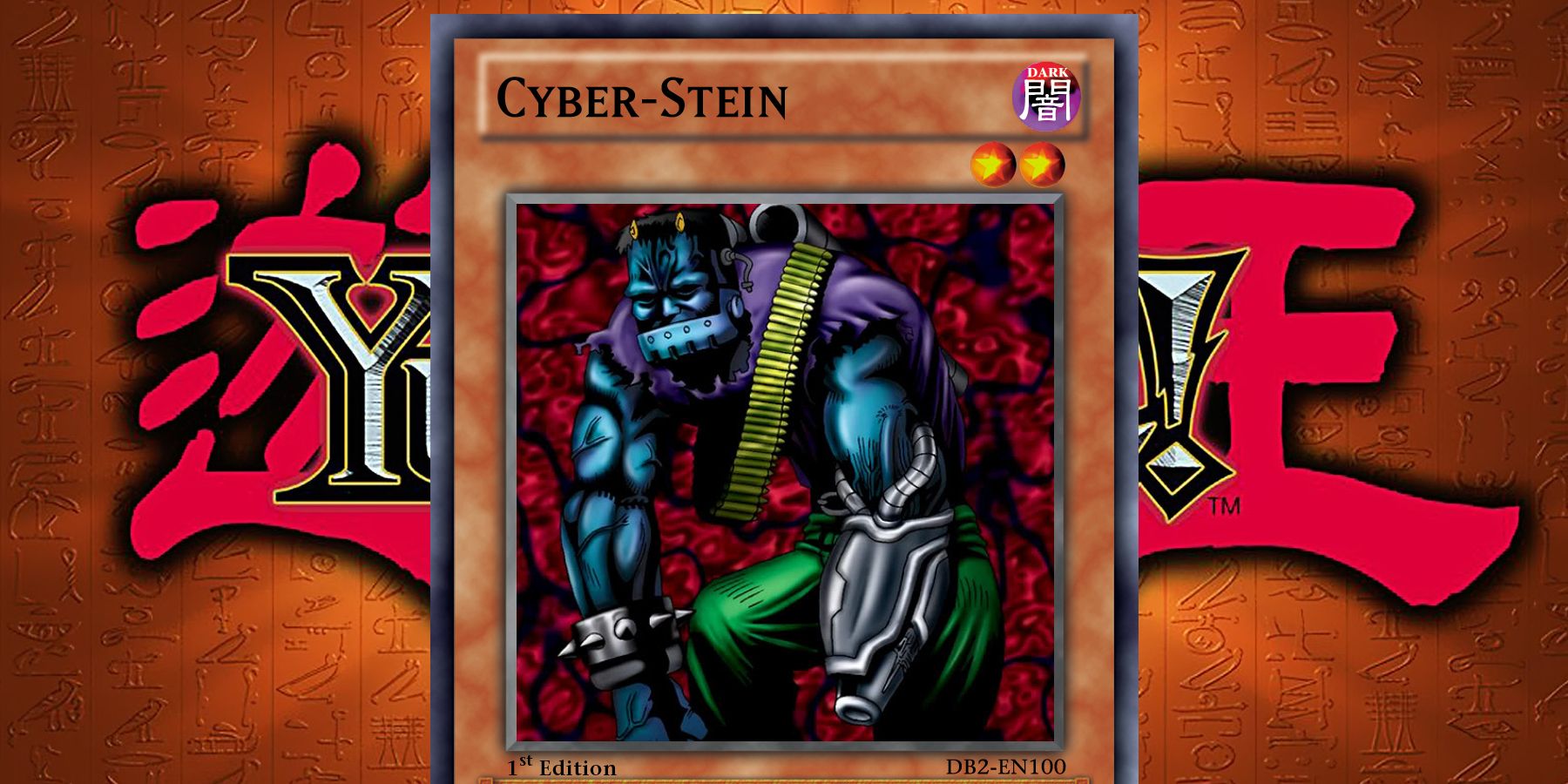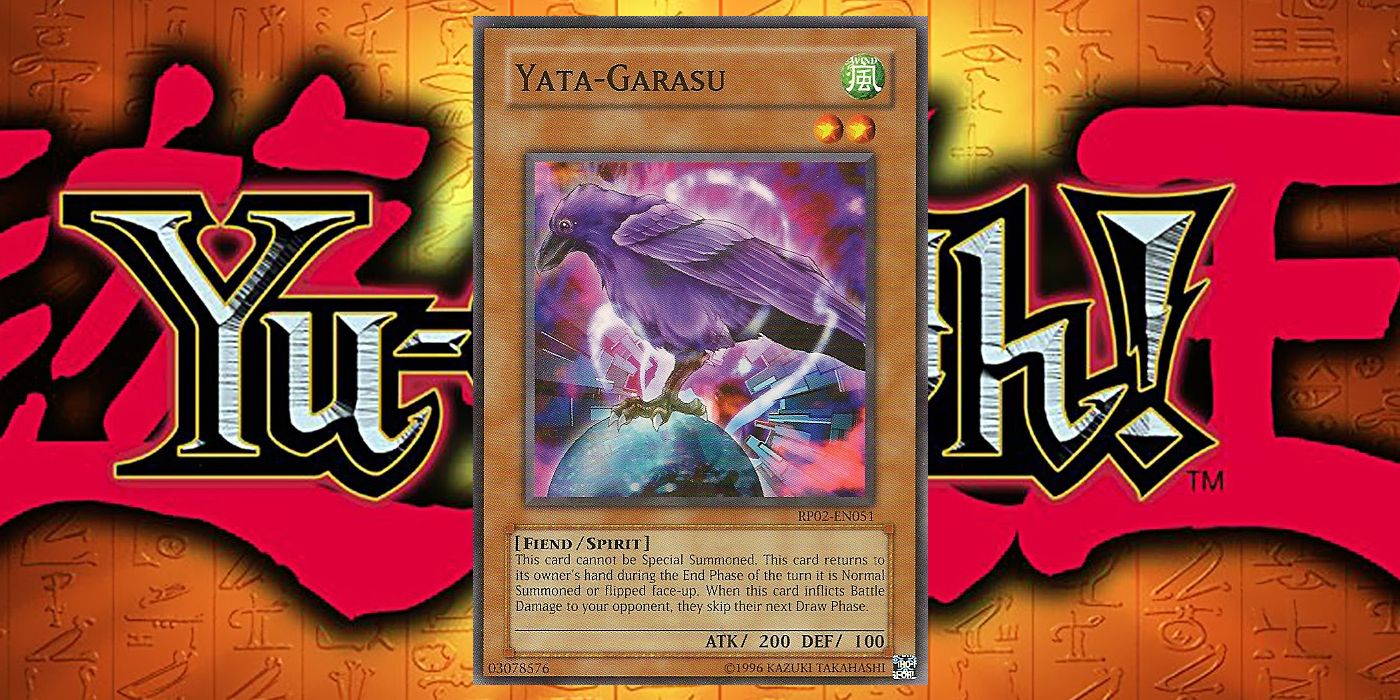The original Yu-Gi-Oh! anime series was an adaptation of the manga of the same name. It led to the creation of the Yu-Gi-Oh! card game, and the two formed a symbiotic relationship. The anime and the card game exist to support each other, with the decks used by fan favorite characters making their way into the real Yu-Gi-Oh! game. What works for dramatic effect in a television show might not always be wise to add into a competitive game, though, as powerful cards can easily be abused. It is for this reason that some Yu-Gi-Oh! cards are banned from use in official tournaments.
We are here today to look at the Yu-Gi-Oh! cards that had to be banned before they totally ruined the game. From one of the most commonly used cards in the anime to the crow that created the ban list.
Here is 15 Yu-Gi-Oh! Cards That Had To Be Banned Before They Broke The Game.
15. Pot Of Greed
There are two cards that were used by almost every character in the Yu-Gi-Oh! animated series. They are Monster Reborn and Pot of Greed. These cards were used in most of the duels that took place in the anime.
Pot of Greed is one of the most basic and brilliant cards in the game. It is a spell card that allows you to draw two more cards. This gives you something called a "+1 advantage" in the competitive scene. A +1 means that a card effect enabled you to receive a benefit without any drawbacks. In this case, at the cost of one card (Pot of Greed itself) you gained a replacement for it, as well as a new card.
Owning and using a Pot of Greed in your deck allows you to circumvent the minimum deck size (40 cards), by, in effect, reducing that number by three (Pot of Greed and the two cards it lets you draw). This allows you to get the cards that you need quicker, without any drawback. Pot of Greed is especially useful in decks that require you to find certain cards, like the pieces of Exodia.
14. Magical Scientist
In order to use powerful Yu-Gi-Oh! cards, you will often have to pay a cost. The best cards in the game will often require you to sacrifice monsters, discard cards, or make you skip your own draw phase. There are some cards which require you to pay Life Points, which is often easy to do, as you are given an abundance of them at the start of the game.
The Magical Scientist card has the ability to let you summon fusion monsters at the cost of a thousand life points each. These monsters cannot be higher than level 6, they are unable to attack the opponent directly, and they must return to the extra deck at the end of the turn.
Magical Scientist is one of the most overpowered cards in the game. It allows you to swarm the field with powerful monsters, for a relatively small cost. The main reason that Magical Scientist was banned was due to the fact that it could win on the first turn. If you managed to get Magical Scientist and Catapult Turtle on the field, then you can keep summoning monsters and sacrificing them, in order to deal damage to the enemy. This technique was almost impossible to defend against, hence why Magical Scientist was banned.
13. Chaos Emperor Dragon - Envoy Of The End
The only way to summon a Chaos Emperor Dragon - Envoy of the End to the field is by banishing a Dark and a Light monster from your graveyard. This is very easy to pull off, as there are lots of excellent Dark & Light monsters that can work together in a deck. Removing two monsters from the graveyard is actually a lot easier to pull off than keeping two monsters on the field so that you can sacrifice them. This means that you can easily summon a monster that has the same stats as a Blue-Eyes White Dragon.
Being able to easily summon the Chaos Emperor Dragon isn't even the most broken thing about it. It has the ability to send all cards on the field and in both players hands to the graveyard. This will deal three hundred points of damage for each card removed. You can use this ability to totally disable your opponent and deal a large chunk of damage to them at the same time.
12. Last Turn
Last Turn is an unusual card, which allows its user to win in one turn if you can create a specific set of circumstances. You need to have one thousand life points or less and a monster on the field, in order to activate it. When Last Turn is used, all other cards on the field and in both players hands are discarded. The opposing player has to summon a monster from their deck and force it to attack your monster on the field. Whoever has the highest ATK score wins the duel, if they are both the same, then the duel is declared a draw.
Players used to build decks around Last Turn, which involved using cards that allowed you to deplete your own life points, and summoning a monster with a high ATK to the field (like a Blue-Eyes White Dragon). This allowed players to disregard most actions in a duel, in favor of winning the game in a single combo.
11. Butterfly Dagger Elma
The Yu-Gi-Oh! card game once introduced a group of monsters, known as the Guardians. Each of these warriors had their own corresponding equipment spell card, which was intended to be their signature weapon. The Guardians were a cool concept, which might have taken off if they didn’t suck so much in competitive play.
One of the equipment cards used by the Guardians has been banned for a long time, due to how easy it is to abuse in a combo. Butterly Dagger – Elma is a spell card that can be equipped to a monster. The monster gains a paltry bonus of 300 to their ATK. If the Butterfly Dagger is destroyed, however, it returns to the player's hand, instead of the graveyard.
There are a lot of cards in Yu-Gi-Oh! that are powered up when a certain amount of spell cards are played. If you can find a way to make sure Butterfly Dagger is destroyed when it enters the field (such as by equipping it to Gearfried the Iron Knight), then you can have an infinite amount of spells played per turn.
10. Dimension Fusion
When a monster is destroyed in Yu-Gi-Oh!, they are sent to the graveyard. It is also possible to banish a monster, which means removing them from the game entirely. As time went on, there were cards that focused on both directly banishing monsters and returning them to the game.
Dimension Fusion is a spell that allows both players to summon as many banished monsters to the field as they can, at the cost of two thousand life points. This is a card that is highly overpowered and is very easy to build a deck around. You simply create a deck filled with powerful monsters, and load it will spell & trap cards that allow you to banish them yourself. You then use Dimension Fusion and summon five creatures to the field, who will remain there for the rest of the battle. If you play your cards right, you can use this card to win in one turn. If you have a clear shot at the opponent, then you will be able to summon monsters with high enough ATK power to deplete their life points in a single battle.
9. Cyber Jar
It took several years of tournaments for the makers of the Yu-Gi-Oh! card game to understand how best to make the game balanced. This is why a lot of earlier cards are still on the ban list, as they were made at a time when the game was still being hashed out.
One of the most overpowered early Yu-Gi-Oh! cards is a monster called Cyber Jar. When it is flipped over, it destroys all other monsters on the field and causes both players to draw five cards each. If they draw a monster of level four or below, then it is summoned to the field (including in face down position, so that flip effect monsters can still use their ability). Both players get to keep the additional cards they drew. Cyber Jar could totally swing the game in its user’s favor, in a single move. It was also easy to build a deck around, by using lots of powerful low-level creatures.
Cyber Jar was banned a long time ago. This is for the best, as it would have been even more powerful in the era of Synchro/Xyz summons. Low-level monsters are actually really good now, as you can easily use them as fuel to summon more powerful creatures. If Cyber Jar was still around, then it might have become the best card in the game.
8. Snatch Steal
The early Yu-Gi-Oh! card game featured some spells that gave you the ability to temporarily take control of another player’s monster. One of the cards that allow you to keep a monster for longer is Snatch Steal, which lets you take an opponent’s monster, and get to keep their monster for as long as Snatch Steal stays equipped to it. The opponent also gains a thousand life points per turn while Snatch Steal is still on the field.
By using this card, you can take your opponent’s best monster and use it to wreak havoc upon them. You could also take one of their monsters and tribute it for a summon of your own.
Snatch Steal’s only downfall is the life point gain that it gives to the opponent. If they can find a way to stall (like by using Swords of Revealing Light or Nightmare Steelcage), then they can stack up on life points while they wait. If you don’t have a way to dispose of the stolen monster (like through a tribute summon), then the opponent will keep benefiting from your move.
7. Solemn Judgement
In the Yu-Gi-Oh! card game, there are a lot of cards that have the ability to counter the moves of the other player. These will usually only affect one type of card. This means that you will be able to counter a monster, spell, or a trap, but not all of them at the same time.
One of the best trap cards in the game is Solemn Judgement. It allows you to counter anything in the game, at the cost of half of your life points. Solemn Judgement will stop any monster from being summoned (as well as canceling any effect it has), or it will counter any spell or trap before it is used. This gives Solemn Judgement an unprecedented level of utility, as it can stop almost any move in the game in a single action. Losing half of your life points is a small price to pay, to be able to stop the opponent dead in their tracks at any point.
6. Victory Dragon
Victory Dragon is a difficult monster to bring out onto the field. It cannot be Special Summoned and it can only be tribute summoned by removing three Dragon-type monsters from the field. Victory Dragon's 2400 ATK points aren't much of a trade off for losing three other monsters.
The reason Victory Dragon is banned is due to its effect. In competitive Yu-Gi-Oh! games, each match consists of three duels. If you win even one of these duels with a Victory Dragon, then you win the whole match. The results of the other duels are annulled; you just win.
Victory Dragon was banned in order to stop people from abusing it in official tournaments. The cost of tribute summoning the Victory Dragon is worth needing to skip other duels, in which you could possibly lose. It would be easy to create a deck based around Victory Dragon, due to all of the support that Dragon-Type monsters have received over the years.
5. Metamorphosis
Fusion monsters were very popular in the Yu-Gi-Oh! anime. It seemed like every character used fusion monsters in their deck, no matter how bad they were. The early fusion monsters were terrible for the most part, with a few exceptions (most notably, the Thousand-Eyes Restrict). This was due to the fact that most fusion monsters weren’t equal to the cost of the three cards it took to summon them (the two fusion materials and Polymerization).
Metamorphosis was a spell card that allowed you to skip most of the setup that was required to bring a fusion monster to the field. It allowed you to sacrifice a monster on the field, in order to summon a fusion monster of the same level. By doing this, you could take a useful card (like the Magician of Faith) and transform it into the incredible Thousand-Eyes Restrict. Metamorphosis means that you can avoid using certain monsters that are required for certain fusions. You could even slot this into other decks and use Metamorphosis as a backup plan, for when you need to bring out a powerful fusion monster.
Fusion monsters were often stronger than normal monsters because they were harder to summon. The reason Metamorphosis was banned was because it made it too easy to bring out powerful monsters.
4. Ultimate Offering
In Yu-Gi-Oh!, you are allowed to perform one normal summon a turn. This means that you can summon one monster that is level four or below for free. If you want to summon a level five or six monster, then you need to sacrifice a creature that is on the field. The level seven or above monsters require two sacrifices in order to summon them to the field.
The Ultimate Offering trap card allows the player to make an extra normal summon per turn, at the cost of five hundred life points. Ultimate Offering stays on the field after activation and can be activated during your opponent’s turn.
Ultimate Offering allows you to more easily summon monsters to the field, for a very small cost. You can even mislead your opponent into preparing for an attack and then summoning a powerful monster during their turn, which will leave them open for a counter attack.
3. Change Of Heart
Change of Heart was the signature card of Bakura from the Yu-Gi-Oh! anime series. It was used in one of the earliest duels in the anime when Yugi and his friends were transformed into monster cards. Bakura briefly managed to reclaim control of his body, with the help of his Change of Heart card.
When Change of Heart is used, it allows you to control one of your opponent's monsters for a single turn. This includes cards that are face down. If you use Change of Heart to steal a monster and use its flip effect, then it will benefit you, rather than the opponent. You can use this to rob an opponent of a beneficial effect monster and send it back, with its ability exposed and useless.
The most abusable aspect of Change of Heart was the fact that you could use one of your opponent's monsters as fuel for a tribute summon. This would have been even more deadly in the days of Synchro/Xyz summons.
2. Cyber-Stein
Do you remember how we said that Magical Scientist was overpowered? Well, say hello to the monster that has the same effect, if it was turned up to eleven.
Cyber-Stein has the ability to summon any fusion monster from the extra deck, at the cost of five thousand life points. This might seem like a steep price to pay, but it actually works in Cyber-Stein's favor. Cyber-Stein was part of one of the earliest overpowered combos to exist in the Yu-Gi-Oh! card game. The effect of Cyber-Stein could be used to summon a Blue-Eyes Ultimate Dragon to the field. You could then use Megamorph on the Blue-Eyes Ultimate Dragon to double its ATK points (which requires having a lower amount of life points than your opponent to work, which you now do, because you paid the cost of Cyber-Stein's effect). This will give you a monster with 9000 ATK points, which can win you the game in one hit.
1. Yata-Garasu
Yata-Garasu is the most hated card in the entire Yu-Gi-Oh! card game. This monster ran rampant during the time when it was first released. The official Yu-Gi-Oh! ban list was originally created to seal this stupid bird away.
The reason Yata-Garasu was so overpowered was due to a combination of its effect and its type. Yata-Garasu's effect is activated when it deals direct damage to the opponent's life points. If Yata-Garasu gets a clean hit on the player, then they do not get to draw a card on their next turn. Yata-Garasu is a Spirit-type monster, which means that it will return to its owner's hand at the end of the turn in which it was summoned.
Yata-Garasu had the ability to prevent another player from acting. If the player had nothing in their hand that could kill it, then they had lost the game. They would be unable to draw a card or kill Yata-Garasu, as it escapes to its owner's hand before you can retaliate. This tactic was known as the "Yata-Lock" and it almost killed the Yu-Gi-Oh! card game. Yata-Garasu will never see active play again, due to how much its power can be abused.
---

